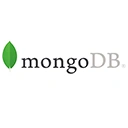Introduction to Advanced Analytics and BI
Unlocking the power of data analytics and business intelligence is vital for making informed decisions. In this guide, we'll explore advanced techniques for performing analytics and building business intelligence solutions with MongoDB, including aggregation, data visualization, and sample code to demonstrate best practices.
1. Aggregation Framework
MongoDB's Aggregation Framework allows you to perform advanced analytics on your data. You can use a pipeline of stages to filter, group, sort, and manipulate data. Here's an example of an aggregation query in MongoDB:
// Calculate the average age of users in the "users" collection
db.users.aggregate([
{
$group: {
_id: null,
avgAge: { $avg: "$age" }
}
}
]);
2. Data Visualization
Visualizing data is key to deriving insights. You can use various data visualization libraries and tools like D3.js, Plotly, or Tableau to create interactive charts and dashboards. Here's an example of a simple bar chart using D3.js:

